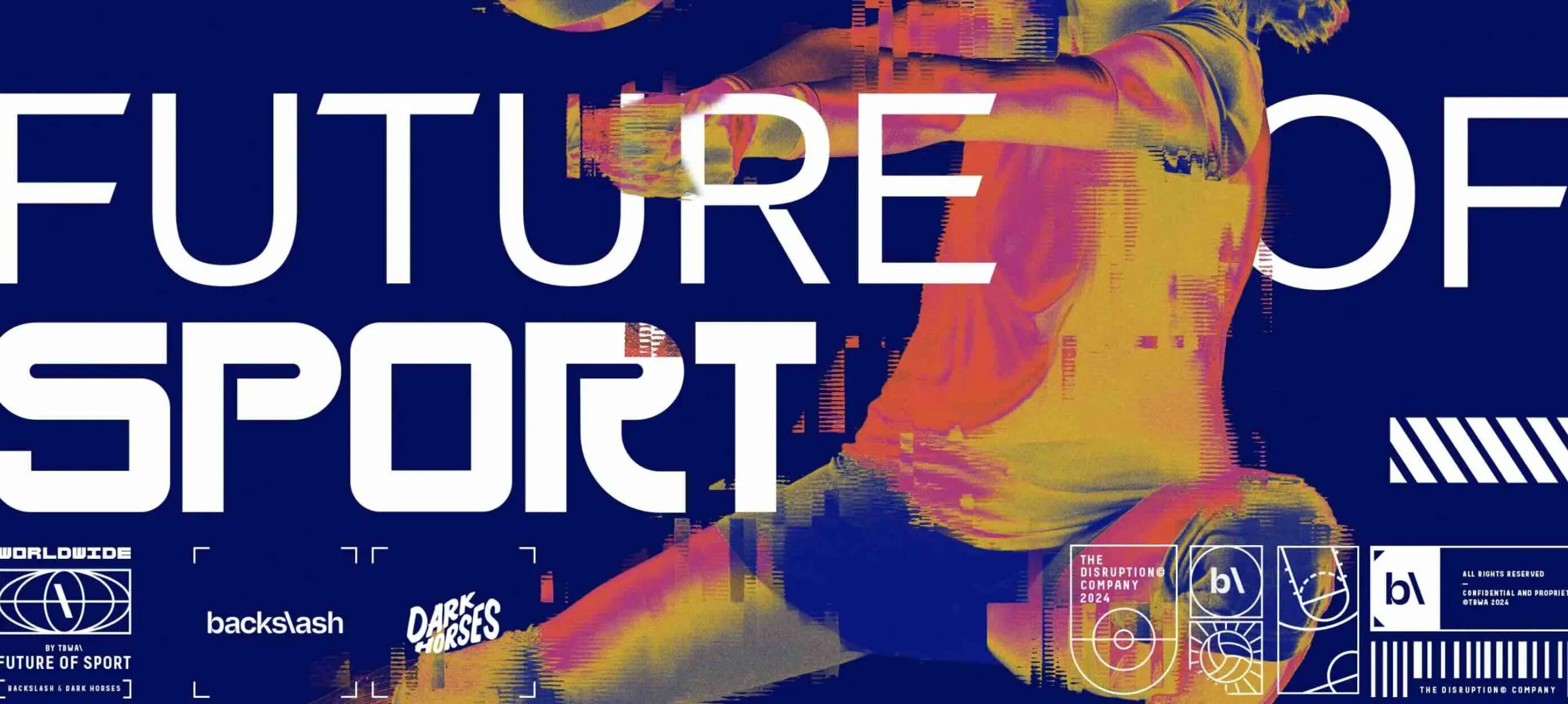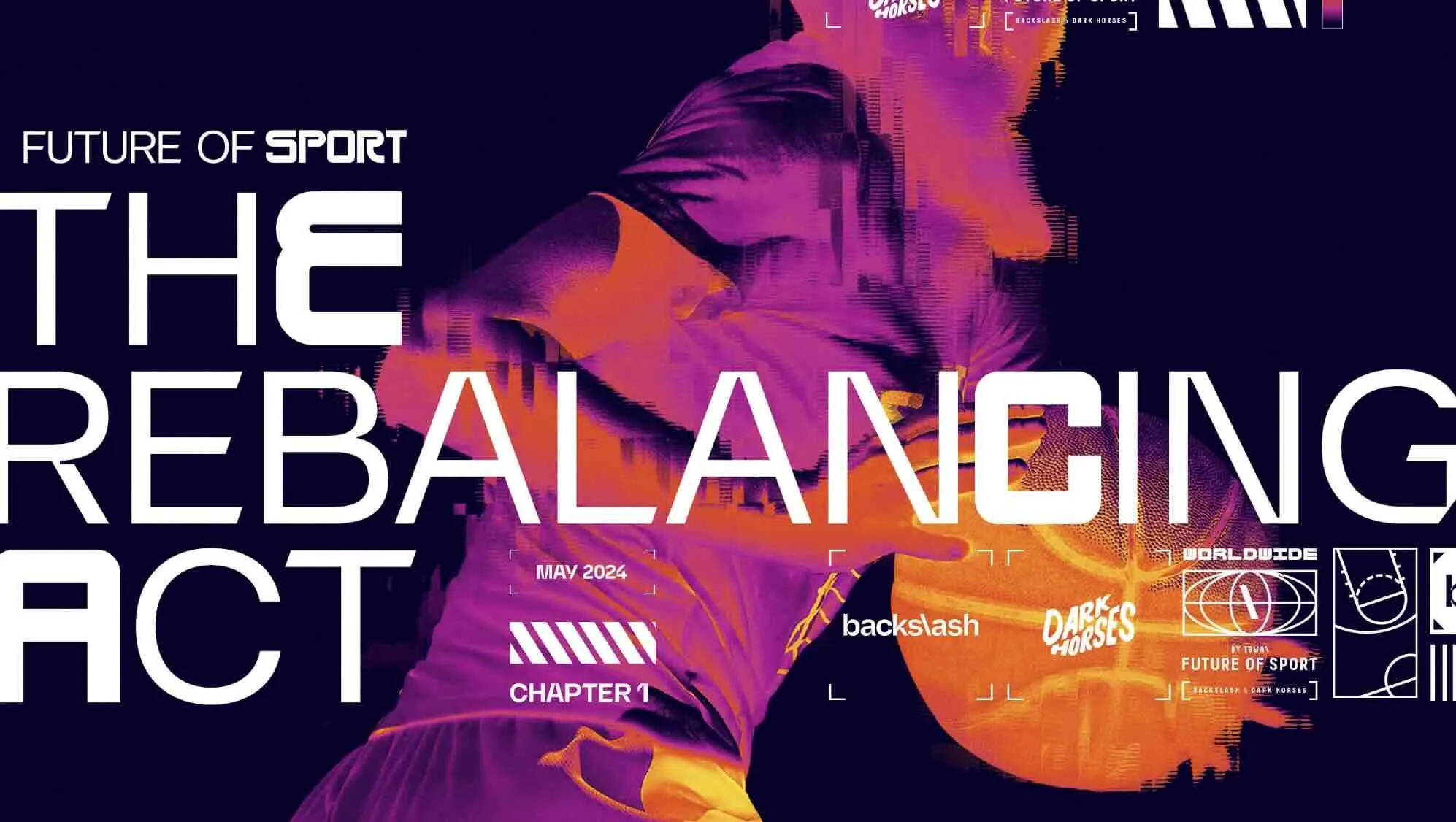Future of Sport

It’s all too easy to make wild predictions about how innovation will ‘change the game’ in sport. The truth is that sport draws its meaning from its own history, meaning many aspects of sport won’t actually change. To separate the hype from the true evolutions, the team behind this report has looked at the influences of technology, climate change, economics and geopolitics as the major forces that will shape the future of sport. Altogether, the four chapters cover the key cornerstones of sport’s future: who will control sport, how fans will consume sport, who will participate, and where they will play.
CHAPTER 1.
The first chapter, The Rebalancing Act, explores the major forces upending tradition in sport. We’re seeing a rebalancing act across culture, geography and gender which means that sport as a whole looks very different to how it did in 1924. As the very foundation of sport is uprooted and remixed, we’ll throw out old assumptions of what’s considered a sport, which nations govern it, and how influence is divided between men and women. With this shift in monetary and cultural control will come an exciting opportunity to rewrite the rules and redistribute power for the better.


CHAPTER 2.
The second chapter explores how and why expressions of fandom are evolving. We first look at the human behaviors that won’t change: a sense of shared fiction, reverence for athletic heroes, and the need for social identity. These are the fundamental motives of fandom that have always and will always exist, and should therefore be the foundation of future-proof ideas and innovations to come. This is especially important as flashy tech and an accelerated trend cycle make it all too easy to get caught up in novelty.
A race to wow fans rather than deliver them lasting value is why we end up with things like worthless NFTs and apps that distract from the viewing experience rather than add to it. That’s not to say, however, that fandom is at a standstill. It’s actually quite the opposite. New technologies, ownership models, and types of media coverage are allowing today’s supporters to get closer to the action than ever before—opening the door to a more intimate and interactive world of sport. This chapter unpacks these exciting developments and offers guiding principles for brands looking to make an impact.
CHAPTER 3.
In our third chapter, we explore how the notion of fairness is changing. Fairness and sport have a complex relationship. On one hand, fairness is deeply ingrained in the sporting code. Moral values of sportsmanship and integrity have been baked into sport since the Victorian era, and they’re still drummed into kids today from a very young age. As such, we find the idea of cheating in sport abhorrent. In some cases, our society even finds it harder to forgive cheating athletes than real-life criminals. Just look at how Lance Armstrong has been condemned to a “life sentence” in many fans’ eyes. In this way, sport is the ultimate beacon of fair play. What’s less readily accepted is the fact that sport is also inherently unfair. It’s hard to talk seriously about a level playing field when your place and
time of birth, socioeconomic status, genetic ability, physical traits, and gender all define your chances of success. Sport is about fierce competition and the very best rising to the top, and as such, it often amplifies injustice more than other widely celebrated areas of culture. In this chapter, we’ll look at how definitions of fairness are changing through the lens of three core questions: Who has the right to compete? Where do we draw the line when it comes to performance-enhancing advantages? And what level of physical and mental risk is acceptable


CHAPTER 4.
In our fourth and final chapter, we take a look at the new physical and virtual spaces that sport is moving into. While some are exploring the possibility of one day playing sports in space, the practical truth is that major disruptive forces will require sport to relocate much more immediately. The biggest among them is climate change, with sea level rise, unbearable heat, air pollution and floods all forcing the migration of stadiums and international competitions. On a societal level, worsening loneliness is also calling for a reevaluation of how our cities are built. Car-centric communities that limit access to public space, as it turns out, aren’t so good for our physical health or our social lives. Putting recreation back at the center can change that. And finally, as immersive technology becomes more affordable and ubiquitous, we’ll see a profound shift in where and how we play sports. Simulators will allow a desert dweller to ski in the middle of summer, hybrid events will give physical sports a gamified spin, and VR will allow us to train and compete in places beyond our wildest imaginations